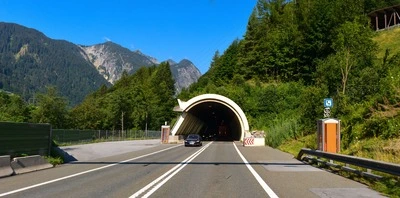
The Arlberg Tunnel runs beneath the mountain range that gives it its name. The tunnel connects the two western Austrian states of Vorarlberg and Tyrol. The road passing through the tunnel is the expressway S 16. The tunnel is operated by ASFINAG.
With a total length of 13,972 meters (13.9 km), the Arlberg Tunnel is the longest road tunnel in Austria. Unlike many other tunnels in Austria, the Arlberg Tunnel consists of only a single tube (instead of the more common two-tube construction). Due to its proximity to neighboring countries Germany, Liechtenstein, and Switzerland, the Arlberg Tunnel is used by around 8,000 cars daily. Construction began on June 1, 1974 (the date of the tunnel breakthrough in St. Anton and Langen), and the tunnel was fully bored through on October 9, 1977 (roughly 3 ¼ years later). It was officially opened to traffic in December 1978.
What many don’t know: At the time of its construction, the Arlberg Tunnel was even the longest tunnel in the world.
The Arlberg Tunnel is a special toll section, meaning that a toll fee must be paid to use this route, regardless of whether you have a motorway vignette. Therefore, you must pay an additional fee to use the Arlberg Tunnel.
If you prefer not to use the Arlberg Tunnel, you can take alternative routes such as the Arlberg Pass. The following alternatives are recommended:
